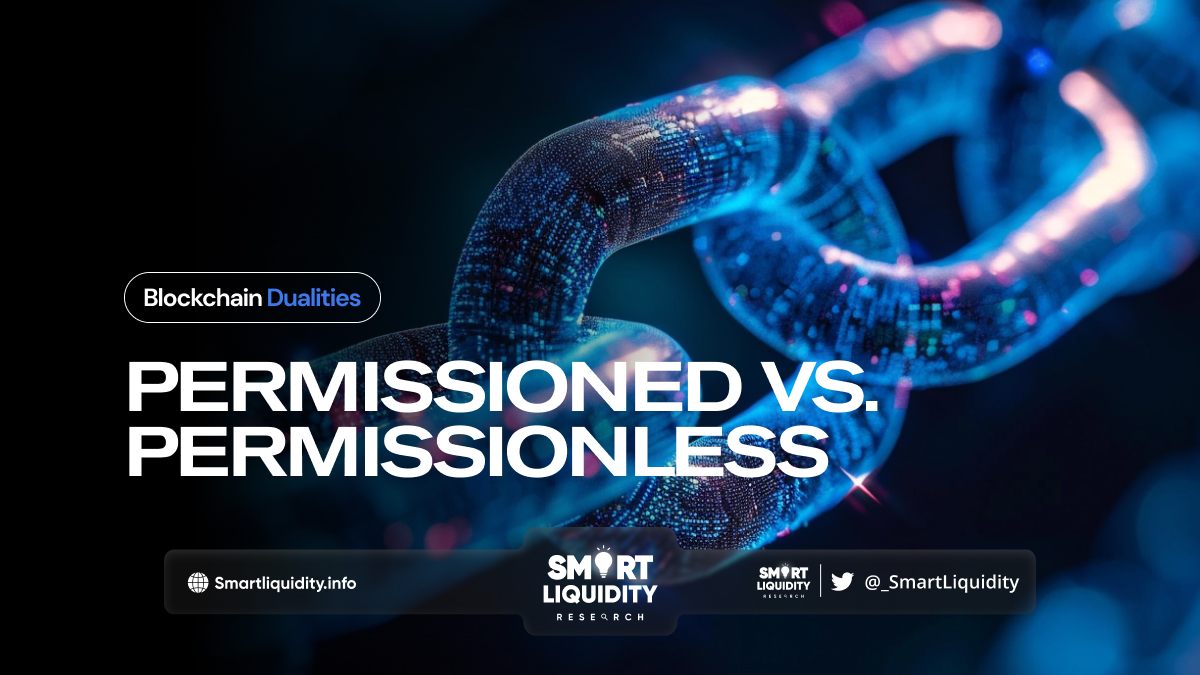Permissioned vs. Permissionless Blockchains: Unveiling the Two Faces of Blockchain Technology


Blockchain technology, the revolutionary ledger promising transparency and immutability, is not monolithic. It presents two distinct faces: the open-door playground of permissionless blockchains and the guarded gates of permissioned blockchains. Understanding these intricacies is crucial for navigating the complexities and exploring the immense potential of this transformative technology.
Demystifying the Permissionless Blockchain
Imagine a vast, digital agora where anyone with an internet connection can participate. That’s the essence of a permissionless blockchain. Transactions are broadcast to the world, verified by a decentralized network of nodes, and permanently etched onto the public ledger. This openness fosters community-driven governance, where token holders collectively shape the blockchain’s future. Bitcoin and Ethereum are the poster children of this model, empowering individuals with financial autonomy and fueling a burgeoning ecosystem of decentralized applications (dApps).
Unveiling the Controlled Environment of Permissioned Blockchains
While the permissionless realm thrives on openness, its counterpart operates with a discerning doorman. Permissioned blockchains, often called consortium or private blockchains, restrict access to pre-approved participants. This controlled environment prioritizes scalability, security, and regulatory compliance. Corporations and government agencies find solace in this model, leveraging it for supply chain management, healthcare data sharing, and even cross-border trade.
Key Benefits and Differences of Permissioned and Permissionless Blockchains
| Feature | Permissioned Blockchains | Permissionless Blockchains |
| Access Control | Restricted to pre-approved participants | Open to anyone with an internet connection |
| Governance | Centralized control by consortium or governing body | Decentralized decision-making by token holders |
| Transparency | Transactions typically private or semi-private | All transactions publicly visible on the blockchain |
| Scalability | High transaction processing speeds due to limited participants | Scalability challenges can arise with increasing network activity |
| Security | Strong security due to controlled access and permissioned nodes | Security relies on the strength of the consensus mechanism and network size |
| Regulatory Compliance | Easier to comply with regulations due to centralized control | May face regulatory hurdles in some jurisdictions |
| Benefits | Increased efficiency, privacy, and control | Higher transparency, security, and innovation potential |
| Costs | Can be expensive to set up and maintain due to private infrastructure | Generally lower cost barrier to entry |
| Examples | Hyperledger Fabric, Corda | Bitcoin, Ethereum, Binance Smart Chain |
Use Cases and Industries of Permissioned and Permissionless Blockchains
The versatility of these models translates into diverse applications across a vast spectrum of industries.
Permissionless Blockchains
💵 Finance:
- Decentralized Finance (DeFi): Lending, borrowing, trading, and asset management without intermediaries.
- Non-fungible Tokens (NFTs): Digital ownership and trading of unique assets like art, music, and collectibles.
- Stablecoins: Cryptocurrencies pegged to real-world assets for price stability.
⛓️ Supply Chain Management:
- Tracking goods and materials throughout the supply chain for transparency and efficiency.
- Automating payments and document exchange.
- Combating counterfeiting and fraud.
🎮 Gaming and Entertainment:
- Play-to-earn games where players earn cryptocurrency for their contributions.
- Secure in-game asset ownership and trading.
- Decentralized content creation platforms.
📲 Social Media and Content Creation:
- Censorship-resistant social media platforms.
- Content monetization through direct micropayments.
- Decentralized identity and data ownership.
Permissioned Blockchains:
🏛️ Government and Public Services:
- Secure and transparent voting systems.
- Land registry and property ownership management.
- Issuance and verification of digital identities.
🏥 Healthcare:
- Secure sharing of medical records between healthcare providers.
- Supply chain management for pharmaceuticals.
- Research data sharing and collaboration.
🏦 Financial Institutions:
- Cross-border payments and settlements.
- Trade finance and securities issuance.
- KYC/AML compliance and fraud detection.
🔗 Supply Chain Management:
- Food safety and traceability.
- Anti-counterfeiting and fraud prevention.
- Logistics and transportation optimization.
⚡ Energy:
- Peer-to-peer energy trading.
- Grid management and renewable energy integration.
- Carbon footprint tracking and offsetting.
Hybrid models also combining elements of both permissioned and permissionless blockchains are emerging, aiming to leverage the strengths of both models. New use cases and industries are constantly being explored as blockchain technology matures and evolves.
The choice of blockchain model depends on specific needs and requirements. Consider factors like:
🛡️ Security and privacy needs
📈 Scalability and performance requirements
⚖️ Regulatory compliance
🌐 Level of decentralization desired
🤝 Existing infrastructure and partnerships
The Future Unlocks: The Evolution of Blockchain Access Models
As the blockchain landscape continues to evolve, both permissioned and permissionless models face exciting transformations. Permissionless blockchains will likely prioritize scalability solutions like sharding and Layer 2 rollups, enabling faster transactions and wider adoption. Additionally, enhanced privacy protocols through zero-knowledge proofs and homomorphic encryption will offer users greater control over their data. These advancements could potentially blur the lines with their controlled counterparts, fostering interoperability and collaboration between public and private networks.
On the other hand, permissioned blockchains are poised for increased adoption in regulated industries. Consortia and partnerships will become increasingly common, streamlining collaboration and leveraging the benefits of shared infrastructure. We can also expect greater integration with existing systems through hybrid models that combine elements of both access models. This hybrid approach could bridge the gap between the security and control of permissioned blockchains and the innovation and flexibility of permissionless ones, paving the way for a more diverse and inclusive blockchain ecosystem.
Ultimately, the future of blockchain access models lies in adaptation and collaboration. As technology advances and regulatory frameworks evolve, we can expect continued innovation in both permissioned and permissionless realms, ultimately leading to a more interconnected and accessible blockchain landscape that caters to the diverse needs of individuals, organizations, and industries.
Conclusion
Permissioned and permissionless blockchains, far from being rivals, are complementary forces shaping the future of our digital world. Understanding their benefits and differences empowers us to choose the right tools for the job, unlocking the true potential of blockchain technology to revolutionize industries, redefine trust, and ultimately, create a more transparent, inclusive, and decentralized future.




